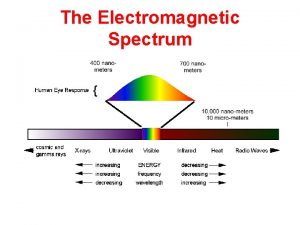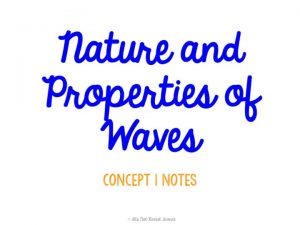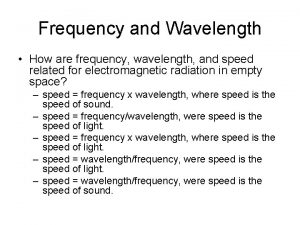Physics Core Practical Investigating speed frequency and wavelength


- Slides: 2

Physics Core Practical Investigating speed, frequency and wavelength of waves PRACTICAL OBJECTIVES AUDIT: Track Your Progress I CAN: Practica l Start Practica l End Measure the speed, frequency and wavelength of waves Equipment list: speed and frequency of water waves Plastic tray with water ruler dibber stop clock calculator Method: measuring speed using v = X ÷ t 1. Measure the distance of the dibber to the end of the tray. Enter this into your table. Convert from cm to m. 2. Using the dibber at one end, create waves travelling down the tray. Not too hard or it will be difficult to see the wave travelling down the tray. 3. Using a stop clock time how long it takes for the wave to reach the other end of the tray. Enter the time into the table. Round up or down to the nearest second. 4. Repeat this twice, try and keep the force that you create the waves with the same. 5. Calculate the average time. Again round up or down to the nearest second. 6. Using the equation, velocity (m/s) = distance (m) ÷ time (s); v = X ÷ t, calculate the average speed of the water wave. Distance wave travels Dibber Recording your results: Convert cm to m Distance (m) Time (s) 1 Average speed (m/s) 2 3 Average

Core Practical Investigating speed, frequency and wavelength of waves Method: Measuring speed using v = f x 1. Physics λ Make sure that the ruler is on the inside of the tray, down the side. 2. To find the frequency of the wave, count how many waves are created in 10 seconds. Then divide by 10. As you are doing this take photos of the waves produced. 3. Using the photo of the waves and comparing to the ruler work out the length of one wave. The peak of a wave will be darker than the rest. You will need to measure from one peak to the next. 4. Repeat this twice and then calculate the speed of the wave using the formula; Speed (m/s) = frequency (Hz) x wavelength (m) 5. Continue with section 3, p 36. Number of waves per second Convert cm to m Frequency (Hz) Wavelength (m) 1 1 2 3 Average speed (m/s)



